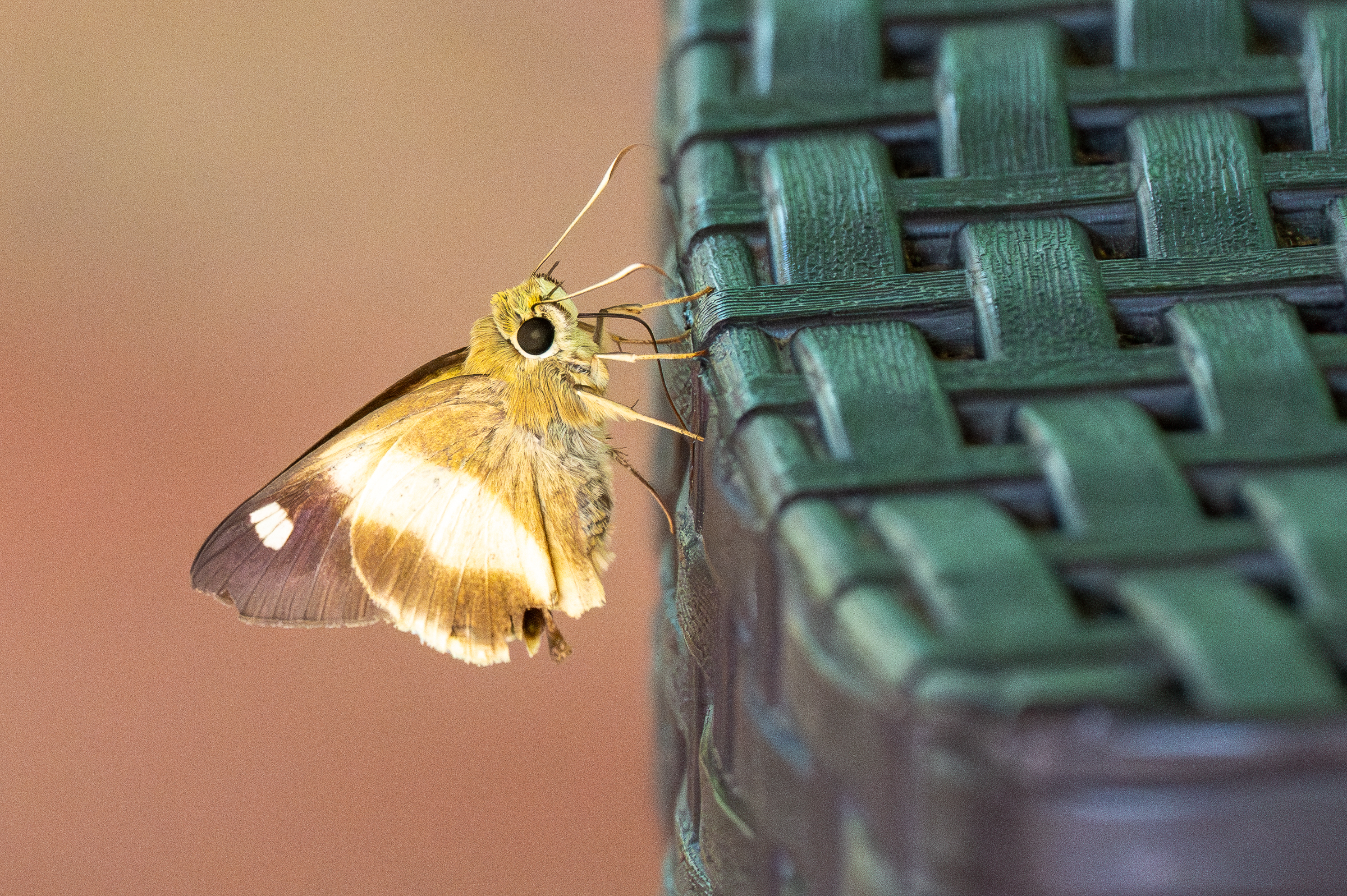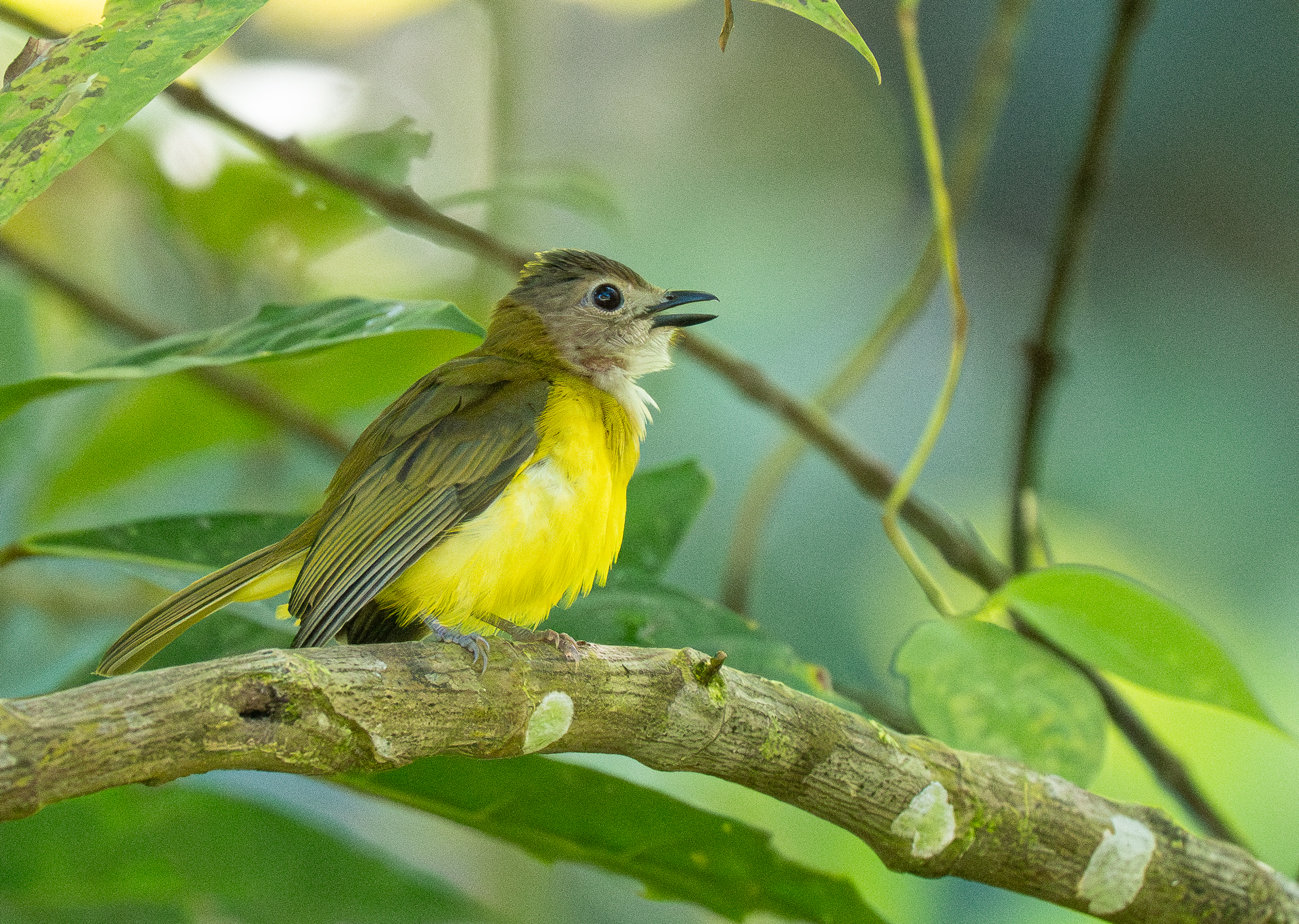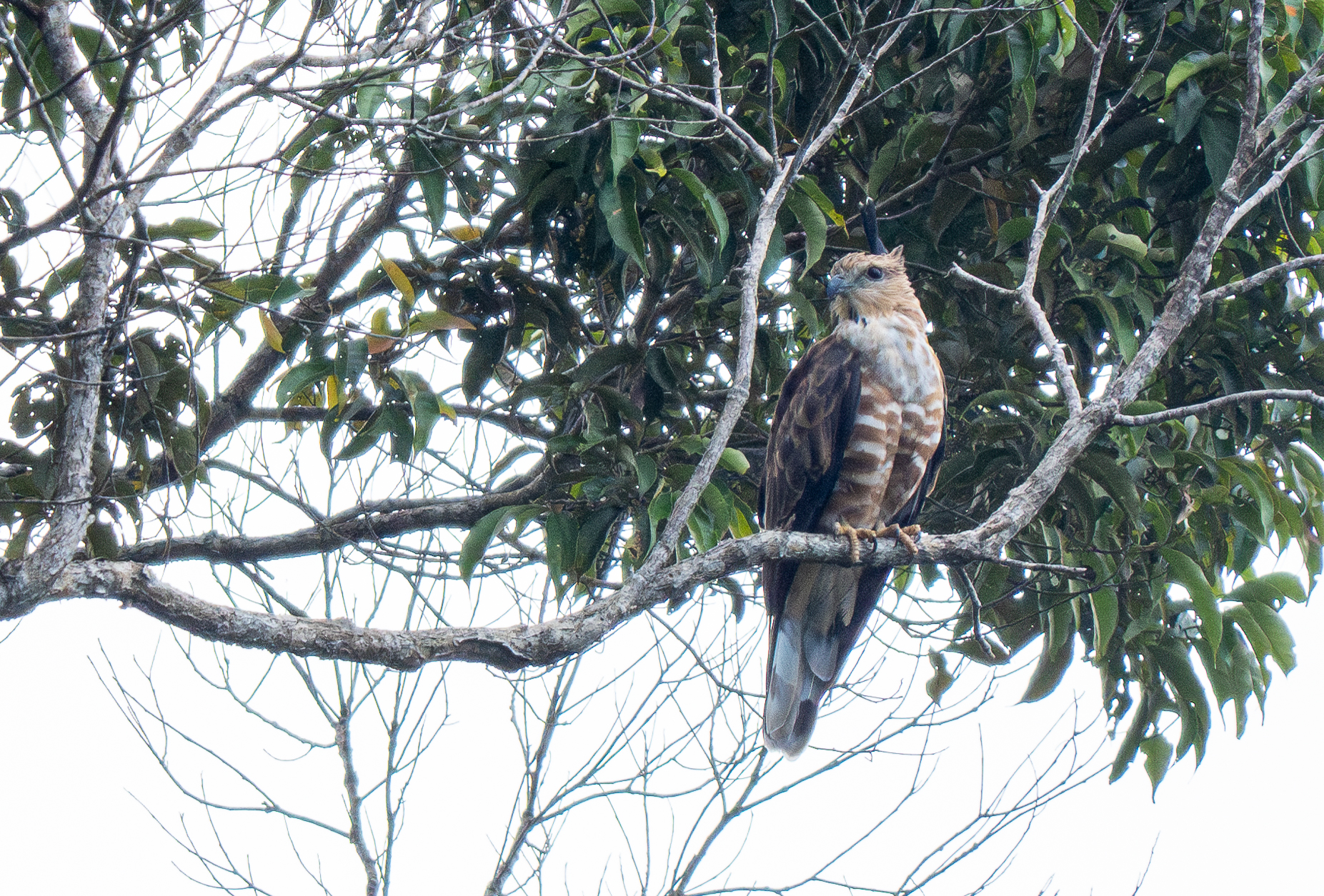After getting back from our trip to Japan, I had another three weeks in the Philippines with Nikki before I had to return to the US. We were mostly in Sorsogon for that time, but I had a work trip in Manila which meant time for a weekend outing. With these couple days to spare, I was finally able to convince Nikki that we should make a trip to Zamboanga City, in the far west of Mindanao.
Zamboanga was a place I had been itching to get to for years, for a variety of reasons. Bird-wise, it was because it's home to the eponymous Zamboanga Bulbul, found only on the Zamboanga Peninsula and the only Mindanao-endemic bird I had yet to see after getting Slaty-backed Jungleflycatcher and Apo Myna in Intavas earlier this year. It also has a variety of surprisingly good birding spots, hosting some of Mindanao's last remaining lowland forest, and a very active little group of birders has sprung up there. More people looking means more good birds, and aside from the bulbul they had managed to turn up quite a good number of other good endemics, including Philippine Leafbird, Mindanao Wattled Broadbill, Southern Sooty Woodpecker, and even Philippine Eagle. Besides that a number of good vagrant birds had been turning up in Zamboanga, including Jerdon's Baza, Black-naped Fruit Dove, and Dark-sided Flycatcher.
Beyond the birds (and as if I needed another reason to visit), Zamboanga's history is fascinating. While most of western Mindanao was under the dominion of the Sultanate of Sulu, a powerful state that persisted well into colonial times, Zamboanga became a protectorate of Spain and the main Spanish outpost in Mindanao beginning in the 1500s. While it still has a strong cultural influence from Muslim Mindanawons and a large Muslim minority, it's majority Catholic and the influence of Spain shows in its colonial architecture and its language. Uniquely in the Philippines, native Zamboangueños speak Chavacano, the only extant Spanish creole language in Asia. It's an interesting mix of Spanish and Austronesian languages, which is pretty much custom-designed to make me wanting to visit to learn more.
Great birds and cultural heritage aside, Zamboanga's location in the far west of Mindanao does make visiting a bit... complicated to say the least. For quite a while the insurgency happening in western Mindanao would occasionally spill over into Zamboanga, with a number incidents of bombings and, unfortunately, kidnappings of foreigners taking place in the area. For these reasons I was nervous to visit for a while, and Nikki expressly forbid it. Thankfully, it's calmed down quite a bit over the past 5 years or so, and more and more people, including foreigners, were starting to visit. Finally, Nikki gave her approval as long as she went along with me.
Our intention was to fly to Zambo late in the afternoon of October 20. Unfortunately, we ended up getting caught in a worse-than-usual Manila traffic jam on our way to the airport and while we had already checked in for the flight, it was too late for us to check our bags. Naturally that terminal of NAIA had no baggage storage (one of the many things making it possibly the worst international airport in the world), so we had no choice but to rebook our flights, this time an evening flight to Cebu and then an early morning flight to Zamboanga on the 21st. It was a deeply annoying waste of time and money, but at least we made it in the end.
In the airport we met with Jay Paul Mantuon, one of the Zamboanga birders and a local guide who we got in touch with to help with transportation and showing us to the birding sites. Once we had all our bags we headed straight up to the birding site to eke out some morning birding before the day got hot and quiet. Our first destination was the La Paz Experimental Forestry site, an area in the hills above Zamboanga run by a local university that had some decent forest remaining and where the local birders had had some decent finds. It was almost 8 by the time we got up there, far too late for a proper morning of birding, but the birds were still active- lots of Buzzing Flowerpeckers in the flowering vines next to the road, and a fairly accommodating Yellow-bellied Whistler that was part of a small mixed flock.
 |
| Buzzing Flowerpecker- the Zamboanga birds are part of the mindanense subspecies, which looks wildly different than the incredibly boring birds in Luzon |
 |
| Yellow-bellied |
 |
| Philippine Ground Orchid |
 |
| Birding along the La Paz road |
Further down the road we got to a spot where the locals had recently seen Jerdon's Baza, but there weren't any around. There were, however, loads of Philippine Leafbirds- up to eight of them, by far the most I've ever seen in one place. These are usually some of the least common of the Mindanao endemics, so I'm not sure why there are so many in this spot. Common as they were they were bastards to photograph, remaining high up in the trees next to the road. A hulking Pinsker's Hawk-Eagle flew overhead, and we had a gorgeous Philippine Trogon near the road as well. The highlight, however, was finally getting looks at Zamboanga Bulbuls! They're not much to look at if I'm going to be honest- basically just larger versions of Philippine Bulbuls with different calls, but seeing them made me one of only a tiny handful of birders (perhaps fewer than 10) to have seen all of the Mindanao endemic birds. Of course that will change once they finally officially split Mindanao Serin, but for now I'll enjoy the distinction.

 |
| Philippine Leafbird |
 |
| Pinsker's Hawk-Eagle |
 |
| Philippine Trogon |
 |
| Zamboanga Bulbul |
 |
| Wizard (Rhinopalpa polynice) |
Jay Paul took us down a little path off the road where they had seen fruit doves recently, and sure enough he ended up spotting a female Black-naped Fruit Dove feeding in a fruiting tree. While Black-naped Fruit Dove is extremely common throughout most of Indonesia, in the Philippines it's supposedly only in the Sulu archipelago southwest of Zamboanga, which is quite biogeographically distinct from mainland Mindanao. Records have been increasing in Zamboanga however, although I'm not sure if it's because they're starting to colonize Mindanao or just because there are more observers these days. Either way, it was a new Philippines bird for me, the second new country bird of the day. We went back up the road to look for the Jerdon's Baza, but only saw a perched Philippine Serpent Eagle.
We didn't see any Philippine Eagles that day however, and it was fairly quiet as one would expect of the middle of the day in the tropics. Still, the forest was gorgeous, with lots of huge dipterocarps of the sort that are almost completely eradicated in Mindanao these days. A showy Black-naped Monarch stopped by the dirt road we walked through the woods along with a flock of much-shyer Philippine Leaf Warblers. Later on a very cooperative Naked-faced Spiderhunter came by, and I happened upon a male Purple-throated Sunbird of the West Mindanao juliae subspecies, which will likely be split at some point as Orange-lined Sunbird. Many Philippine Spine-tailed Swifts zoomed overhead us, always one of my favorite endemics to watch.
 |
| Black-naped Monarch |
 |
| Naked-faced Spiderhunter |
 |
| Purple-throated Sunbird or Orange-lined Sunbird, depending on who you ask |
 |
| Philippine Spine-tailed Swift |
 |
| Episteme darocana, an unusually showy noctuid moth |
 |
| A Eutropis skink of some sort |
 |
| Smaller Wood Nymph |
 |
| The birding road in Baluno |
We drove back to our hotel in the center of Zamboanga, where we checked in and had a much-needed nap. Jay Paul came back later that afternoon and we headed to the Zamboanga College of Marine Science and Technology, which is host to an impressive (and publicly accessible) fishpond and wetland complex. Accessible urban green spaces like this are extremely rare in the Philippines, so props to ZCMST for maintaining it. The ponds had had a pair of breeding Glossy Ibis, an extremely rare resident, over the summer but alas they weren't around by October. Instead I entertained myself getting pictures of the
Barn Swallows and
Great Egrets flying by. An exploration of the fishponds revealed a small group of shorebirds in a hidden pond, including
Marsh Sandpiper, Wood Sandpiper, Common Redshank, and
Common Greenshank. Davao birding friend
Julius was around at that time too and the next day found a Forest Wagtail, which would have been a Philippines lifer for me, but unfortunately we never saw it. We had dinner that evening on the Zamboanga waterfront, a really nice area with a lot of old Spanish architecture.



 |
| Barn Swallows |
 |
| Great Egret |
 |
| Neosarmatium smithii- first record on iNat for the Philippines! |
 |
| The ZCMST pond |
 |
| Sunset on the Zamboanga waterfront |
We had one more morning in Zamboanga the next day before we had to fly back to Manila, and we once again started in La Paz, properly early this time. Along with Jay Paul we were joined by Kevin Hearne, one of the most active local birders who's been responsible for many impressive finds in the past couple of years. We had great fun birding with him and Jay Paul, and overall I loved the very friendly birding community in Zambo. I only wish all cities in the Philippines had at least this many active birders and photographers.
We began at sunrise, and as the first light touched the treetops had a small group of Buff-spotted Flamebacks perching nicely on a dead tree next to the road. There were dozens of Coletos at this site as well, and some of them even came unusually close. I love Coletos with their weird lunchmeat-shaped masks and metallic calls, but they're annoyingly skittish most of the time. There were more Buzzing Flowerpeckers along the road and a close flyby from a Philippine Honey-Buzzard, while in the treetops was a Naked-faced Spiderhunter and a few more Zamboanga Bulbuls.
 |
| Female Buff-spotted Flameback |
 |
| Male Buff-spotted Flameback, this one of the West Mindanao lucidus subspecies, which has a reddish-orange back unlike the dull brown of most Mindanao birds |
 |
| Coleto |
 |
| Buzzing Flowerpecker |
 |
| Philippine Honey-Buzzard |
 |
| Naked-faced Spiderhunter |
 |
| Zamboanga Bulbul |
 |
| A gorgeous arboreal orchid (Trichoglottis agusanensis) with a cool parasitic vine (Amyema sp.) |
What followed was an impressive string of new Philippines birds for me. First, a flock of Purple Needletails flew overhead, one of which had a startlingly bright white throat- White-throated Needletail! They are vagrants or uncommon migrants to the Philippines, and it was a lifer for me although annoyingly enough I wasn't able to get a picture before it flew off never to return, in typical swift fashion. I'm not sure if the Records Committee will accept it with only a rough sketch but several of us got on the distinguishing marks. Next Jay Paul spotted a cute little Dark-sided Flycatcher perched next to the road, another rare migrant to the Philippines and a new country bird for me.
 |
| Dark-sided Flycatcher |
Finally, as we walked downhill a Jerdon's Baza flew over us and perched in a tree above the road! Though they're common in most of Southeast Asia, the Philippine population of Jerdon's Baza is very poorly known, with only a handful of recent records. There are some indications it may be its own species, in which case it would be very endangered indeed. Thankfully they've been reasonably reliable at this spot since early October and there seems to be a pair, so hopefully they will nest sometime soon if they haven't already. Either way it was a great record, and a very nice new Philippines bird for Nikki and I.
 |
| Jerdon's Baza |
It was mid-morning and getting hot by then, but we continued walking a bit further down the road to see if anything else would turn up. I found a fairly confiding Chestnut-tailed Jungle Flycatcher in a little gully by the side of the road, and later on a gorgeous male Narcissus Flycatcher that refused to come any closer for pictures. That was all we had time for though, and we piled back in the car to head back to town, where we had lunch at a surprisingly good restaurant serving Tausūg (one of the Muslim ethnic groups of western Mindanao and Sulu) cuisine.
 |
| Chestnut-tailed Jungle Flycatcher |
 |
| Narcissus Flycatcher |
 |
| Nomia sp. |
 |
| Some kind of cute jumping spider |
 |
| Common Banded Demon |
 |
| The group at La Paz |
 |
| Our lunch of Tausūg cuisine, one of the best meals I've had in the Philippines |
We ended the trip with a total of 90 species, including a whopping five new Philippines birds for me- Zamboanga being one of the only places I can get that many new species, at least until I bite the bullet and make my way to the Batanes. I was impressed with the Zamboanga birding scene- both the birds and the birders. I hope to make my way back there at some point to spend a little more time exploring the various spots, but for now it seems like the locals have things covered!

































































Comments
Post a Comment